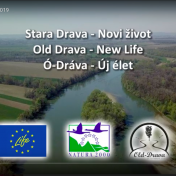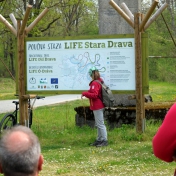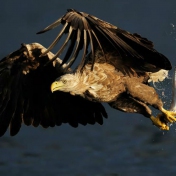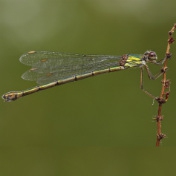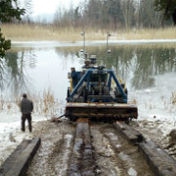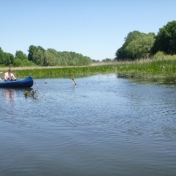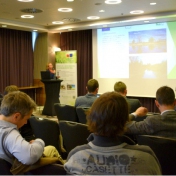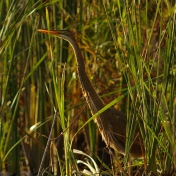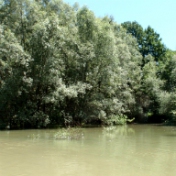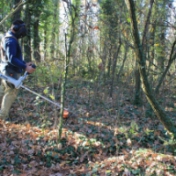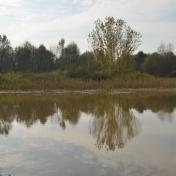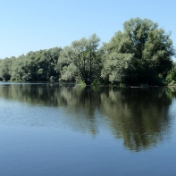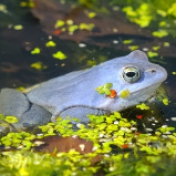News
Old-Drava monitoring supported by ALDI
With the closure of the Old-Drava LIFE project in April 2019, the protection of the future of the river's wildlife is not over! With the support of ALDI Hungary, a 3-year-long biomonitoring activity will be launched.
How big is our waterfootprint?
Freshwater is our treasure and all life on Earth depend on it. It is crucial to raise awareness on human impact on freshwater resources.
Documentary about the Old-Drava
The project progress and results have been documented in a short film.
Successful closing event in the final project month
The fact that nature doesn’t know boundaries, counts as a cliché. This applies particularly to Drava region where the river and the country border intersect a dozen times between Hungary and Croatia. Old Drava oxbow near Barcs is also located on both sides of the border. It is protected in both countries and it is also part of Transboundary Biosphere Reserve Mura-Drava-Danube.
The field works finished at Old-Drava
Construction work of the water retention structure on the Old Drava oxbow lake has been completed. The bottom weir with embedded lockable culvert and an apron-protection against erosion was finalized.
The water in Old-Drava is not lost
The longest left-side of Drava is the Old-Drava oxbow near Barcs and Kriznica that is home for species like Ferrugineous Duck and Little Bittern. Due to the improper water supply of the oxbow the status of its surrounding habitats has degraded in the previous decades. The cooperation of Croatian and Hungarian partners started four years ago for improving the ecological status. The field work started in the autumn 2018 and the expected result is that the average water level in Old-Drava will be 1 meter higher.
Field works started on the project site
After long preparatory works the permission processes the field works on Old-Drava finally started at the 29th October 2018. The water retention artefact will be at the site named Black creek that is the lower stretch of the oxbow and which function will be to increase the water level and stabilize it.
Dissemination of know-how in Old-Drava project
The experiences that were gathered in the Old-Drava cross-border project is published in a short booklet in Hungarian, Croatian and English. This booklet might help in developing upcoming cross-border ecological restoration and water management projects.
Survey of biological status of Old-Drava has continued
The survey of the biological status of the Old-Drava brought new results in 2017. There are species and habitats of European significance in the oxbow and along it, which are traced regularly during the monitoring. These annual surveys give a unique and comprehensive picture of the Old-Drava, for which there was no opportunity before.
Fieldwork on Old Drava is in process
The boat that implements the dredging was released on Old Drava in the beginning of March and the fieldwork could start within the frame of Old Drava LIFE project. The material of the river-bed has been extracted from a 500 metre long area.
New results on the biological state of the oxbow lake
The biological survey of the Old-Dráva continued in 2016. Since both species and habitats of European significance are present in the oxbow lake and on its shores, every survey provides valuable results.
What does the Old-Drava provide us?
One of the key elements of our project is to map out why Old-Drava oxbow is important for locals, to whom it is unique and why it is useful or precious. In order to find it out, we have organized four meetings with the participation of nearby residents, anglers frequenting the Old-Drava, foresters, fishermen, nature protection and border control officials, hunters, farmers, researchers and others concerned with the oxbow due to their official tasks.
The Old Drava presented at the Info Day of Program LIFE in Zagreb
Info Day of the LIFE program was held in Croatia In Zagreb on March 21st, organized by the Ministry of Environment and Energy, and the National Contact Point for the LIFE program.
Old-Drava themed WWF Magazine is out now
The new WWF Magazine edited within the framework of the project is out now. The booklet gives a broad perspective of the partners' work for a better water supply of the oxbow, and for the improvement of the quality of the gallery forests along the water; and describes their results achieved so far.
Leaflet of the project
The project’s goals, activities and results are now available in a colourful Old-Drava leaflet that was created in Hungarian, Croatian and English.
The ecological baseline study is available
The ecological baseline research on Old-Drava finished in the autumn 2015. The final report of the status of flora and fauna is now available. This was the most detailed assessment of the Old-Drava so far.
Improved conditions in the gallery forests along the Old-Drava
Renewal of the forest crop began in the floodplain forest along the Old-Drava. In previous years and decades, there were several plantations in the field, however, inappropriate species were planted quiet often.
New fishing platforms along the Old-Drava
During the fall of 2015, we demolished part of the old and ruined fishing platforms along the Old-Drava. This task was a long time coming, as these messy platforms and their surroundings were an eye sore in the oxbow.
Habitat survey of the Old Drava
Surveys of the habitats, terrestrial and aquatic fauna of the Old Drava were conducted in 2015 during spring and summer. Groups of researchers familiar with the Drava and wetland ecology carried out the analyses along the 17-km-long oxbow. The diversity of habitats along the meandering Old-Drava was well presented by the fact that 17 habitat types were registered within the only 80 allocated habitat patches.
First Croatian-Hungarian Life project launched
River Drava is one of Europe’s treasure troves of biological diversity. It is a hot spot of natural habitats, which are now rare in Europe, such as large and very well preserved floodplain forests, river islands, gravel and sand banks, side branches and oxbows. The river and its riparian habitats are home to species, like white-tailed eagle, black stork, little tern, or sand martin.
Project goal and its activities
The project’s main objective is to contribute to the conservation and resilience of the riparian habitat through improving the water regime and improving biodiversity status of floodplain forest along the oxbow.
Biological monitoring started
The spring arrived to the Old-Drava oxbow, and the assessment of the ecological status started. The baseline study of the habitat is important, since we would like to monitor the results of the project at a later stage. The baseline study is the first assessment of this activity, which define the reference status. The assessment will be completed both Hungarian and Croatian side of the Old-Drava.
Official meeting with the Life control body done
The first official visit of the LIFE monitoring team took place this February int he visitor center of the Danube-Drava National Park Directorate. We reported about the partners’ activities, and about the upcoming activities. The visit was accompanied by a field visit, where the project partners and the colleague of the monitoring team visited the Old-Drava.


